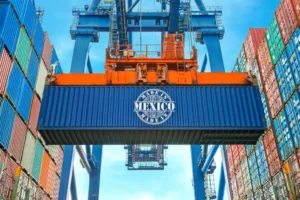In March, Mexico showcased a notable turnaround in its economic performance, registering a significant trade surplus of $2.098 billion.
This marked a dramatic shift from the $585 million deficit seen in February, highlighting the resilience of the Mexican economy.
The increase was largely fueled by a robust $3.248 billion surplus in non-oil products, despite a $1.150 billion deficit in oil-related trade.
Data from the National Institute of Statistics and Geography (Inegi) revealed that the total exports for March amounted to $50.752 billion.
This included a substantial contribution of $48.654 billion from non-oil exports and $2.028 billion from oil exports.

However, overall exports saw a decrease of 5.3% compared to the previous year, with non-oil exports dropping by 4.5% and oil exports falling by 21.4%.
The most significant losses were in the mining and metallurgical sectors, where exports plummeted by 22.6%.
Domestic metal products also faced a sharp decline of 20.6%. Furthermore, the export of electrical and electronic equipment decreased by 6.8%, and automotive products saw a 2.4% reduction.
Contrastingly, certain agricultural exports performed exceptionally well.
Fresh strawberries surged by 47%, cattle by 29.3%, avocados by 24.2%, and fresh legumes and vegetables by 14.8%. Additionally, pepper exports grew by 9%.
On the import side, there was a 7.1% reduction in total imports, which amounted to $48.654 billion.
Specifically, consumer goods imports dropped to $7.133 billion, a 3.9% decrease from the previous year.
This included a significant 43.6% decline in oil consumer goods like gasoline and butane/propane gas, although non-oil consumer goods imports rose by 8.3%.
Notably, capital goods imports decreased for the first time since January 2021, pointing to a potential cooling off in investment growth.

